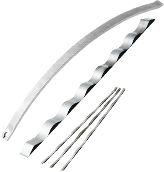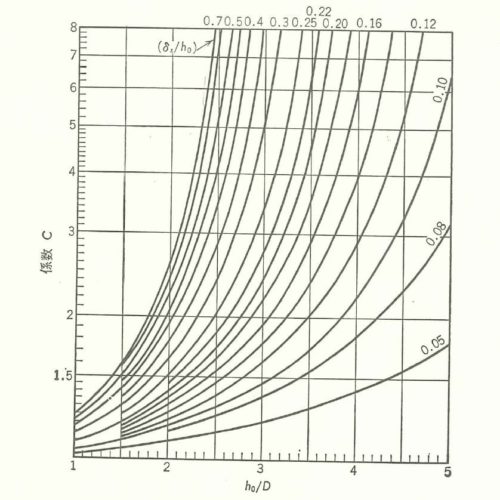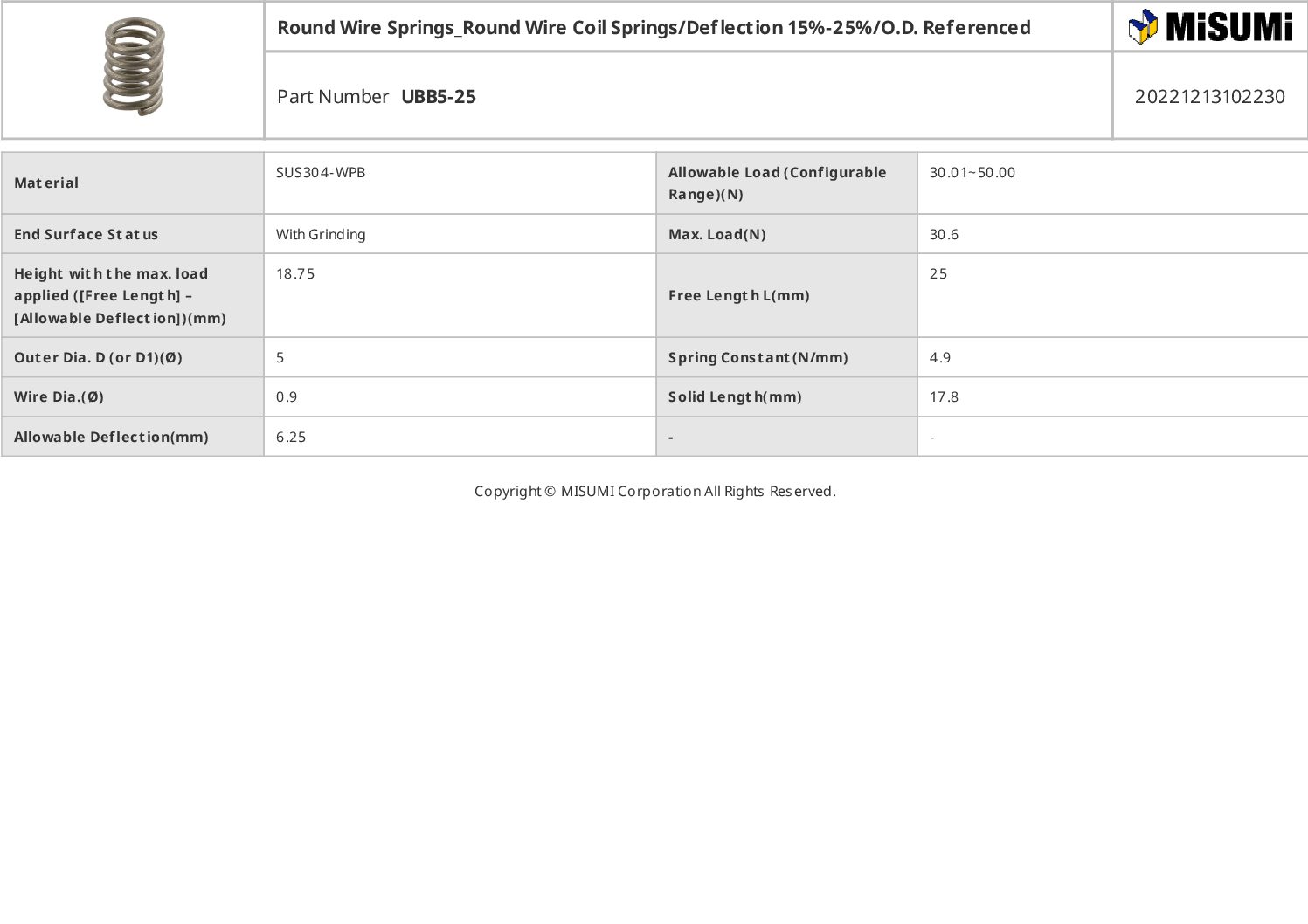Question Anonymous 2017/8/21(Mon) 14:19
Assume that the compression coil spring alone has a spring constant of 5N/mm when a force of 100N is applied. The maximum capacity of the spring is 150N. When this spring is assembled and the structure is compressed on one side, theoretically, I thought that a force of 101N and 102N would be required when the spring is compressed by 0.2mm and 0.4mm respectively, but the result was not what I expected when I measured it with a measuring instrument that can measure load and displacement. When measured, the result was shown by a graph with a steep slope from the starting point to up to about 0.4mm, and then it is asymptotic to the spring constant. Moreover, the force was 70N and 90N when the spring was pushed by 0.2mm and 0.4mm respectively. Since the parts on both sides of the structure are made of metal and it has a cored bar, we believe that there will be no force loss due to the deflection of the structure. It is hard to understand why the load suddenly starts with 100N, moreover, I do not understand the difference between theory and reality. Please help me answer this question.
Answer Tokai Spring 2017/8/21(Mon) 14:22
Thank you for your inquiry, Spring Newbie!
“Deflection%” and “Accuracy of load cell” are considered as factors that prevent the spring constant from being calculated.
・ Deflection%
According to Japanese Industrial Standard JIS B 2704 for compression coil springs, “The spring constant can be determined when the difference between load (force) points is within 30 to 70% of the total deflection and by the difference in deflection”.
It is stated that the spring constant is generally stable when the amount of deflection is in the range of 30 to 70% of the total amount of deflection (deflection when the spring is at its solid height). If the value is out of the above range, the calculation may not be valid.
・ Accuracy of the load cell
To measure something by 10 decimal places and 100 decimal places accurately, a measuring instrument that can measure accurately up to 100 decimal places and 1000 decimal places is required respectively (100 decimal places means 0.01-0.09 , 1000 decimal places means 0.001 to 0.009).
There is no problem as long as the measuring instrument can specify up to 1000 decimal places, but if not, there is a possibility that we cannot guarantee the accuracy up to 100 decimal places.
Once again, many thanks for your inquiry.
Answer Anonymous 2017/10/10(Tue) 10:33
With a coil spring being installed with 10% of the maximum deflection, assume that if a piece of luggage of 100kg is mounted on the spring, it will stop moving. Now, if the coil spring is installed with 80% of the maximum deflection, and the luggage is reduced by 20 kg, will the spring height be back to 10% of the maximum deflection state? I look forward to your reply.
Answer Tokai Spring 2017/10/12(Thu) 9:51
Thank you for your inquiry, Spring Newbie!
Suppose that the compression coil spring is installed with 10% of the maximum deflection.
When you put 100 kg of luggage on the spring, the coil spring deflected up to 80% of the maximum deflection.
If you reduce your luggage by 20 kg, it will be 100 kg-20 kg = 80 kg.
Therefore, since 80 kg of luggage is loaded on the spring, the amount of deflection of the spring will be slightly different from 80% of the maximum deflection when you mounted 100 kg.
It is still necessary to unload 100 kg of luggage to return it to the initially installed state (10% of the maximum deflection).
Once again, thank you for your inquiry!
Answer Anonymous 2019/2/18(Mon) 10:43
If the spring constant is halved from the original, the elastic force will be halved for the same contraction length, so is it possible to think that the possibility for the permanent deformation of spring to happen is less because one side of the spring is not compressed? I need an answer from you.
Answer Tokai Spring 2019/2/18(Mon) 11:05
Spring Newbie, if the spring constant is halved, and if the amount of deflection is the same, the repulsive force will also be weakened and the load on the spring will be reduced, making it harder to set. You can also check here for the calculation formula of the spring constant!
Thank you!
Answer NamDr. Mohan s 2020/9/26(Sat) 15:17
How to calculate the lateral deflection of a spring?
Answer Tokai Spring 2020/9/26(Sat) 15:26
Dear NamDr. Mohan s ,
Thank you for your question.
If the coil centerline is oriented vertically, and the direction perpendicular to it is horizontal, the spring constant in the vertical direction is defined by the expression (1). In this case, the spring constant in the horizontal direction is called lateral stiffness and can be obtained using the expression (2).
(1) Spring constant in vertical direction k = Gd^4/8ND^3
(2) Spring constant in horizontal direction ky / kx = C { 0.294 ( hs / D )2 + 0.382 }
ky=expression (1)=P/δs
kx:lateral stiffness
hs:spring height at vertical load
P=h0–δs
C: a coefficient determined by aspect ratio and (vertical deflection / free height)
In any case, if kx and ky are required, they may be calculated by dividing the spring deflection caused by an oblique load in an arbitrary direction into vertical and horizontal components.
I hope this is helpful in answering your question.
Answer Sateesh 2021/6/7(Mon) 0:43
Hello,
Is there an expression for computing coefficient C in the expression, ”ky / kx = C { 0.294 ( hs / D )2 + 0.382 }”
(or) a thumb rule (or) regular assumed values for coefficient C based on spring material?
Kindly provide the same, if it exists.
Thanks
Answer Tokai Spring 2021/6/7(Mon) 14:03
Answer Name songkram 2022/12/13(Tue) 13:11
Answer Tokai Spring 2022/12/13(Tue) 17:28
Dear Songkram,
Thank you for contacting us!
If you could please provide us with your email, we will send you the quotation as soon as possible.
Best regards,
Tokai Spring’s Support Team
We are happy to answer any inquiries regarding technology, specifications, materials, etc. Please feel free to ask.



















